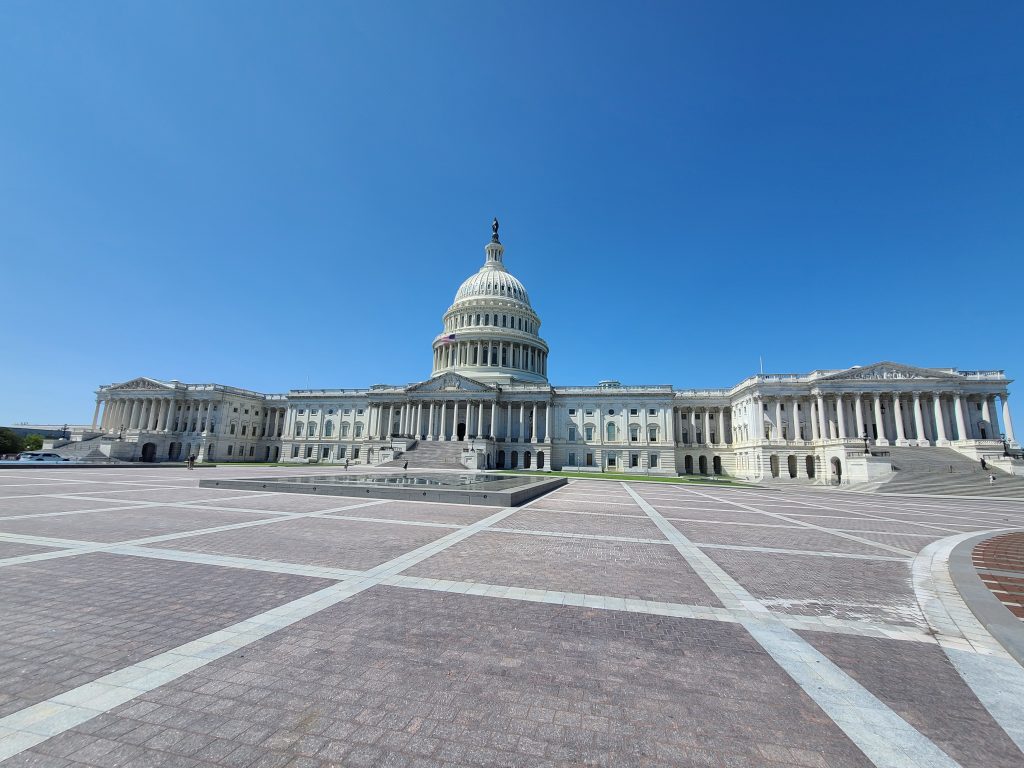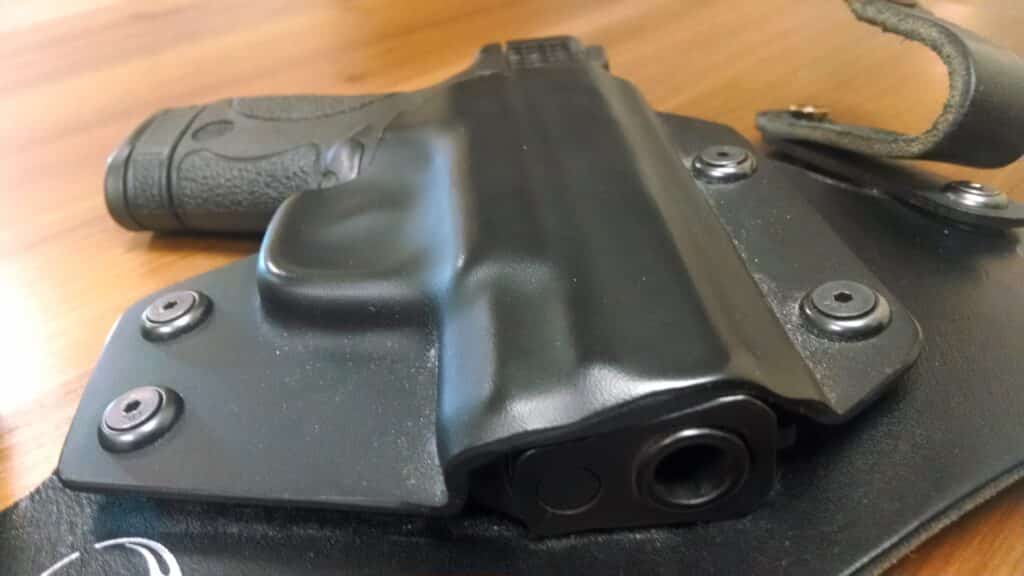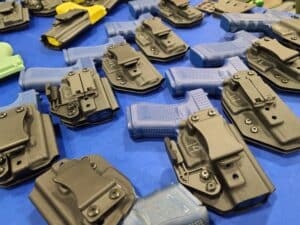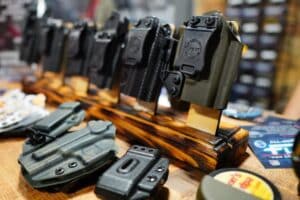But do they have the votes?
That’s the big question I try to answer this week. I’m confident Speaker Nancy Pelosi (D., Calif.) wouldn’t put a bill up for a vote that she isn’t sure will pass. But she has a heavy lift ahead of her for multiple reasons.
So, maybe the bigger question is whether the “assault weapons” ban makes it to a vote.
Contributing Writer Jake Fogleman explains a new paradigm emerging in the wake of the Supreme Court’s decision to strike down “may-issue” gun-carry laws: “Shall Issue, May Carry.”
Are people who live in states like New York and California, where this paradigm is taking shape, anymore able to legally carry a gun than before? Can these new restrictions stand for very long?
Plus, the FBI agent who created the agency’s active shooter report joins the podcast to talk solutions.

Analysis: Will House Democrats Pass an ‘Assault Weapons’ Ban? [Member Exclusive]
By Stephen Gutowski
The House Judiciary Committee will take up an “assault weapons” ban next week, but do they have the votes to actually pass it? The lift is heavier than it appears on first glance.
H.R.1808 will be marked up and could soon make its way to the House floor. It would ban the sales and manufacturing, though not the possession of, a huge swath of firearms. While it targets AR-15s and AK-47s by name, it would apply to any semi-automatic rifle that can accept detachable magazines and has any one of the banned features such as a pistol grip or adjustable stock.
It also bans swaths of semi-automatic shotguns and handguns as well.
The legislation appears to be on good footing when looking at the number of co-sponsors. It needs 218 votes to pass, and it already has 212 co-sponsors. Adding Speaker Nancy Pelosi (D., Calif.) and sponsor David Cicilline (D., R.I.) gets the bill to 214.
However, that count is misleading.
Four co-sponsors can’t actually vote on the bill. Three of them are non-voting delegates and former-congressman Antonio Delgado (D., N.Y.), who resigned in May.
So, the current count is really at 210.
The fact that the assault weapons ban was not part of the gun-control package the House passed late last month is another indicator of how hard those last eight votes may be to get. If they didn’t have them in the wake of the Uvalde shooting, it’s difficult to see how they’d have them now.
That’s especially true looking at recent polling. Assault weapons bans are the only gun-control policy that’s actually lost popularity in the wake of Uvalde. Quinnipiac University found support for a ban at an all-time low, down 17 points in four years, with Americans nearly evenly split on the question.
But assault weapons bans remain very popular with Democrats, as the number of co-sponsors demonstrates. And it’s far from impossible the democratically-controlled House could get one done, especially since this is probably their last chance before losing control of it.
The most obvious place to look for those last eight votes is with those who voted for the magazine ban passed as part of the House’s June gun package. It’s an analog policy and has a lot of crossover support. That part of the bill passed, but only by the thinnest margin: 220 votes.
None of the four House Republicans who voted for the magazine ban are co-sponsors of the assault weapons ban. Representatives Fitzpatrick (Pa.), Jacobs (N.Y.), Kinzinger (Ill.), and Upton (Mich.) haven’t gone on record about how they plan to vote.
Neither have the seven Democrats who voted for the mag ban but aren’t sponsoring the AR ban. Representatives Bishop (Ga.), Bush (Mo.), Defazio (Ore.), Gonzalez (Texas), O’Halleran (Ariz.), Slotkin (Mich.), and Thompson (Calif.) are likely the key to passing the bill.
But even if all of them come around, Democrats will still need at least one of the Republicans to get the bill over the line. Or they could try to flip one of the four Democrats who voted against the magazine ban. It seems like a longshot that Representatives Cuellar (Texas), Golden (Maine), Kind (Wis.), and Schrader (Ore.) would do that sort of turnaround, though.
None of the representatives listed above have clarified their position on the ban. Most did not respond to a request for comment. Representatives Vicente Gonzalez (D., Texas) and Fred Upton (R., Mich.) told The Reload they are waiting until the bill makes it through markup to decide whether to support its final text.
Ultimately, the best tell for whether the votes are there will likely be if the bill makes it to a final vote. In the House, there’s no point to putting up a bill you can’t pass since it would ultimately be your party that blocks it.
Even if Democrats do pull in 218 votes, it’s not entirely clear what the plan is beyond that. An assault weapons ban is not going to pass the Senate. The Senate version of the bill has just 37 co-sponsors.
If it does make it through the House on the back of swing-district Democrats taking a hard vote, it’s still likely to be defeated by Democrats in the Senate–most likely without getting a vote.
Podcast: The Agent Behind the FBI’s Active Shooter Report Discusses Potential Solutions to the Problem [Member Early Access]
By Stephen Gutowski
We’ve seen some of the worst acts of mass violence in American history this summer.
That’s why I wanted to bring on an expert in active shooter situations to give some insight into what causes these events and how they might be prevented. There are few people with a better understanding of the situation than the person who created the FBI’s research program on active shooters: Katherine Schweit.
She literally wrote the book on how to stop the killing.
Schweit created the FBI’s definition of “active shooter.” While most media or activist counts for “mass shooting” focus on how many people are shot or killed, the FBI doesn’t have an official definition for the term. Instead, it focuses on identifying people who attempt to carry out random public shootings regardless of whether they are successful.
That makes it narrower than most definitions used by major media outlets, which incorporated many gang or crime-related shootings, but broader than definitions from the Associated Press or Mother Jones that focus on mass shootings where the attacker is able to kill many people. Schweit said that was the goal of her approach since it gives an opportunity to study trends that appear among those who attempt these attacks.
She said nearly all of the active shooters the FBI has profiled over the past decade are young men. Most use handguns. And most are triggered by a combination of different stressors such as financial distress or social ostracization.
Shcweit said the FBI’s research has identified ways that shootings can be prevented. She said a big part of the solution is for people to speak up when they notice the warning signs somebody may be spiraling toward violence. She even explained a recent example where a co-worker successfully stopped a likely attacker after he threatened to carry out an attack.
Plus, Contributing Editor Paul Crookston joins the show to talk about the flood of post-Bruen lawsuits.
You can listen to the show on your favorite podcasting app or by clicking here.
Video of the full episode and clips are also available on our YouTube channel.

Analysis: Shall Issue, May Carry? [Member Exclusive]
By Jake Fogleman
Though they may no longer limit the issuance of carry permits to those who can sufficiently demonstrate a special need, several states are now set on imposing comprehensive restrictions on where and when carry permits are valid.
Such restrictions are set to create a legal minefield for gun owners newly able to receive carry permits. They’re also likely destined to result in legal battles for many years to come.
In reaction to the Supreme Court’s decision striking down the state’s previous gun carry regime, New York passed a new law designed to dramatically restrict how permitted gun owners can carry within the state. Working off of the Supreme Court’s holding that gun restrictions in sensitive places are permissible under the history and tradition of the Second Amendment, the new law takes an expansive view of what constitutes a “sensitive place.” As such, it deems all government property, health care facilities, churches, schools, public transportation, protest locations, establishments that sell alcohol, and the entirety of Times Square “sensitive places” where licensed carry is criminally prohibited.
It also flips the traditional understanding of private property exceptions on its head by rendering all private business establishments presumptively off-limits for gun carry unless a business owner explicitly authorizes licensed carry with a visible sign on the premises.
Licensed gun carriers who find themselves carrying a firearm in one of the newly designated sensitive places would be subject to a Class E felony, punishable by up to four years in prison.
Governor Kathy Hochul (D.) acknowledged the predicament she was creating for carriers when the new law was under consideration. When asked by reporters where permit holders would actually be able to legally carry, she responded “probably some streets.”
By barring legal gun carry from so many places, coupled with stiff criminal sanctions for violations, New York gun owners face a new paradigm. They can now attain carry licenses, but for all intents and purposes cannot use that license to carry a firearm in most areas outside the home without facing legal peril. That’s despite the Supreme Court expressly ruling that lawful citizens have a protected right to bear arms outside the home for self-defense less than a month ago.
This new “shall issue, may carry” paradigm may not be limited to New York either. Other formerly may-issue jurisdictions are currently working on new laws designed to prohibit licensed gun carry in various locations.
A new California bill would deem carry illegal on all school grounds, college and university campuses, government and judicial buildings, medical facilities, public transit, public parks, playgrounds, public demonstrations, and any place where alcohol is sold.
Likewise, county officials in Montgomery County, Maryland—the state’s most populous county—are working on a bill that would ban licensed carry within 100 yards of any location defined as a space for “public assembly.” Critics have charged that the law’s vague definition of public assembly would make a vast array of spaces off-limits to licensees.
“The biggest issue is what’s defined as public assembly,” Deryck Weaver, a local gun store employee, told the Washington D.C. Fox affiliate. “Because we don’t have a lock gate on our parking lot, the parking lot is considered a place of public assembly even though it’s private property.”
But while the legislative onslaught is beginning to gain steam in many of the states impacted by the Bruen decision, the staying power of such efforts is questionable. The Supreme Court directly addressed the idea of broad “sensitive places” exceptions for gun carry in Bruen, and it would appear to cast doubt on the new tactics being employed.
“[E]xpanding the category of ‘sensitive places’ simply to all places of public congregation that are not isolated from law enforcement defines the category of ‘sensitive places’ far too broadly,” the Court wrote. “Respondents’ argument would in effect exempt cities from the Second Amendment and would eviscerate the general right to publicly carry arms for self-defense that we discuss in detail below. Put simply, there is no historical basis for New York to effectively declare the island of Manhattan a ‘sensitive place’ simply because it is crowded and protected generally by the New York City Police Department.”
This argument will almost certainly be used to challenge New York and any subsequent jurisdictions that pass restrictive carry laws under a “sensitive places” framework. New York’s new presumption of gun carry prohibition on private property is already facing a legal challenge. There will almost certainly be an avalanche of additional lawsuits to follow as more and more jurisdictions take this approach.
Until those are all resolved, gun owners in affected states will have to live with the new “shall issue, may carry” reality for the time being.
That’s it for now.
I’ll talk to you all again soon.
Thanks,
Stephen Gutowski
Founder
The Reload






